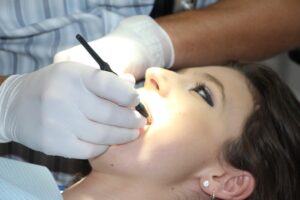Face and neck lift surgery is ideal for individuals who are experiencing signs of aging such as sagging skin, loss of muscle tone, deep facial wrinkles, and jowls. Common candidates for these procedures are those whose skin elasticity has diminished with age, leading to excess or loose skin around the jawline, cheeks, and neck. This can create a tired or aged appearance, making some people feel less confident about how they look.
Typically, individuals who opt for face and neck lift surgery are in their 40s to 70s, but it’s not exclusive to this age group. Anyone noticing significant sagging, drooping skin, or an imbalance in facial features that causes discomfort or dissatisfaction could be a candidate. It’s also an excellent option for those who’ve lost a lot of weight and are left with loose, hanging skin around the face and neck.
Beyond aesthetics, some people choose these surgeries for functional reasons. For example, drooping skin can contribute to discomfort or even hygiene issues around the neck area. Our team at Clínica Birbe ensures that each patient undergoes a thorough assessment to determine whether they are a good candidate and to tailor the treatment plan to their unique facial anatomy and goals.
Is There a Certain Age for Facelift Surgery?
There is no one-size-fits-all age for facelift surgery. The decision to undergo a facelift is based more on the condition of the skin and underlying facial structures than on chronological age. Most facelift patients fall between the ages of 40 and 70, as this is typically when aging becomes more visible and skin elasticity starts to decline significantly. However, we’ve seen younger patients in their 30s with early signs of aging, such as fine lines or minor sagging, who seek more subtle, preventative procedures.
In younger patients, less invasive procedures such as mini facelifts or injectable treatments like fillers and Botox may suffice. These options help maintain a youthful appearance without the need for surgery. However, as aging progresses, the skin loses collagen, and more profound changes such as sagging jowls, deep nasolabial folds, and loss of facial volume become apparent. At this point, a traditional or deep plane facelift may be recommended.
Older individuals, particularly those in their 60s and beyond, can still benefit from facelift surgery, provided they are in good health. While more extensive facial work may be needed for older patients, modern surgical techniques ensure natural, long-lasting results that can restore confidence and create a more youthful appearance.
How is the Planning for Facelift Surgery?
The planning for a facelift at Clínica Birbe starts with an in-depth consultation where we assess your unique facial structure, skin quality, and aesthetic goals. During this consultation, we take the time to understand what bothers you about your appearance and discuss your expectations from the surgery. Whether it’s deep wrinkles, sagging skin, or a tired look, the consultation helps us tailor a treatment plan specific to your needs.
We will also perform a thorough medical evaluation to ensure you are in good health and a suitable candidate for surgery. This includes a review of your medical history, any medications you are currently taking, and lifestyle factors such as smoking, which can affect healing. We may also take pre-surgical photographs and create 3D imaging models to help visualize the expected outcomes.
Part of the planning involves discussing the type of facelift that will best suit you. Options include:
– Mini Facelift: For those with early signs of aging and minimal sagging.
– Traditional Facelift: A more comprehensive procedure that targets moderate to severe sagging in the mid and lower face.
– Deep Plane Facelift: An advanced technique that lifts both the skin and underlying muscles for a longer-lasting, natural result.
– Neck Lift: Often combined with a facelift to address sagging skin and muscle laxity in the neck area.
We will also provide detailed pre-surgical instructions, including steps to stop smoking, avoiding certain medications, and dietary recommendations to optimize healing. Planning is crucial to ensure you have a smooth surgery and recovery with outstanding results.
What Are the Risks and Complications Associated with Face and Neck Lift Surgery?
Face and neck lift surgeries are considered safe, especially when performed by experienced surgeons like those at Clínica Birbe. However, as with any surgical procedure, there are risks and potential complications. It’s important to be aware of these before deciding to undergo surgery.
Some of the most common risks include:
– Infection: As with any surgery, there is a risk of infection, though this is relatively rare with proper post-operative care.
– Scarring: Although facelift and neck lift incisions are strategically placed to minimize visible scarring, some individuals may develop more prominent scars, especially if they have a history of poor wound healing.
– Nerve Injury: Temporary or, in rare cases, permanent nerve damage may occur, affecting facial movement or sensation. Most nerve injuries are temporary and resolve within a few weeks to months.
– Bleeding or Hematoma: Excessive bleeding or the formation of a hematoma (a collection of blood under the skin) can occur, requiring additional treatment.
– Poor Wound Healing: Patients who smoke or have underlying health conditions may experience slower or problematic healing.
– Asymmetry: There’s a small risk of uneven results, though this can often be corrected with minor touch-up procedures if necessary.
At Clínica Birbe, we take extensive measures to minimize these risks, including personalized preoperative assessments and postoperative care instructions.
Is Preparation Treatment Required Before Facelift Surgery?
Yes, preparation before facelift surgery is crucial to ensure a smooth operation and optimal healing. During your consultation at Clínica Birbe, we will provide detailed instructions on how to prepare for surgery.
Here are some common pre-surgical recommendations:
– Stop Smoking: Smoking reduces blood flow and can significantly impair healing, increasing the risk of complications. It’s essential to stop smoking several weeks before surgery.
– Avoid Certain Medications: Medications that thin the blood, such as aspirin, anti-inflammatory drugs, and certain supplements, can increase the risk of bleeding. We will advise you on which medications to stop and for how long.
– Skincare: Sometimes, we recommend pre-surgical skincare treatments to improve skin quality and ensure it is in the best condition for surgery. These treatments may include chemical peels or medical-grade skincare products.
– Healthy Diet: A balanced diet rich in vitamins and nutrients helps prepare the body for surgery and promotes faster healing. We might recommend supplements like vitamin C or zinc to aid recovery.
– Hydration: Staying well-hydrated is important both before and after surgery to maintain skin elasticity and help with healing.
Proper preparation sets the stage for a safer surgery and a faster, more comfortable recovery.
What Are the Different Types of Face and Neck Lift Surgeries?
There are several types of face and neck lift surgeries, each designed to address specific concerns and varying degrees of aging.
– Mini Facelift: Ideal for younger patients or those with minimal sagging. It focuses on lifting the lower face and can be performed with smaller incisions, resulting in a shorter recovery time. It targets early jowls and mild skin laxity.
– Traditional Facelift: A more comprehensive approach that addresses moderate to severe sagging, wrinkles, and deep folds. It involves repositioning the deeper facial tissues and removing excess skin to create a more youthful appearance. This technique lifts the cheeks, jawline, and neck.
– Deep Plane Facelift: This advanced technique lifts both the skin and the underlying facial muscles, producing a more natural and long-lasting result. Unlike traditional facelifts, which primarily tighten the skin, the deep plane lift restores youthful volume and contour by working with the deeper structures of the face. It’s highly effective for correcting significant aging, particularly in the midface and lower face.
– Neck Lift: This surgery focuses on the neck area, addressing sagging skin, muscle laxity, and fat accumulation. It is often combined with a facelift to provide a smooth, youthful contour from the face down to the neck.
Each procedure is customized to your specific needs, and during your consultation, we will recommend the approach that will give you the best results.
What Happens After Face and Neck Lift Surgery?
After surgery, you can expect a recovery period of several weeks. Immediately following the procedure, you may experience swelling, bruising, and discomfort, but these are managed with prescribed pain medications and proper care.
– Swelling and Bruising: These peak during the first few days after surgery and gradually subside over 2-3 weeks. Keeping your head elevated and using cold compresses can help reduce swelling.
– Bandages and Drains: You will likely have bandages around your face and neck, and in some cases, small drains to prevent fluid accumulation. These are usually removed within a few days.
– Numbness: Temporary numbness or tingling around the incisions is normal and will diminish over time as the nerves heal.
– Jaw Movement and Eating: Initially, your facial movements may feel stiff or restricted, and soft foods may be recommended for the first few days.
Most patients can return to light activities within two weeks, but it may take up to a month or more before resuming strenuous activities or exercise. Full results become more apparent as swelling decreases, typically within 3-6 months.
What Would Be the Cost of Face and Neck Lift Surgery?
The cost of face and neck lift surgery at Clínica Birbe can vary depending on several factors, including the type of procedure and the complexity of the surgery. On average, a facelift costs between €6,000 and €12,000, but this can increase if additional procedures such as eyelid surgery or fat grafting are performed.
The cost generally includes:
– Surgeon’s fees
– Anesthesia fees
– Hospital or clinic facility costs
– Pre- and post-operative care



